Books of 2021
[personal books Happy new year! One of my primary goals of 2021 was to create this blog, which I actually managed to achieve. In 2022, I intend to continue writing on this blog and to also post content that can be read by anyone, not just people who do research on machine learning theory. As a first attempt to write something that’ll appeal to non-computer scientists, here’s a quick post listing and commenting on the non-technical books I read last year.
Stars [*] indicate a book was chosen by a book club. I thoroughly enjoyed nearly every book on the list, but those with dagger [\(^\dagger\)] marcations are those I’d particularly recommend. If you have any thoughts, questions, or book recommendations, feel free to comment below or email me.
For the early books on the list, I read them months ago, so some of my comments are a bit rusty.
- Diamond Age, Neal Stephenson
- Antifragile, Nassim Nicholas Taleb
- The Death and Life of Great American Cities, Jane Jacobs
- The New Me*, Halle Butler
- The Midnight Library*, Matt Haig
- Pachinko\(^\dagger\), Min Jin Lee
- A Burning, Megha Majumdar
- New York 2140*, Kim Stanley Robinson
- Being Mortal\(^\dagger\), Atul Gawande
- The Man Who Mistook His Wife for a Hat*, Oliver Sacks
- Guns, Germs, and Steel, Jared Diamond
- Drive Your Plow over the Bones of the Dead\(^\dagger\), Olga Tokarczuk (reread)
- A Brief History of Seven Killings*, Marlon James
- Red, White, and Royal Blue, Casey McQuiston
- The Smallest Light in the Universe\(^\dagger\), Sarah Seager
- Exhalation*\(^\dagger\), Ted Chiang
- Fun Home*\(^\dagger\), Alison Bechdel
- The Vegetarian*, Han Kang
- The Plague, Albert Camus
- The Remains of the Day\(^\dagger\), Kazuo Ishiguro
- Conversations with Friends, Sally Rooney
Diamond Age, Neal Stephenson
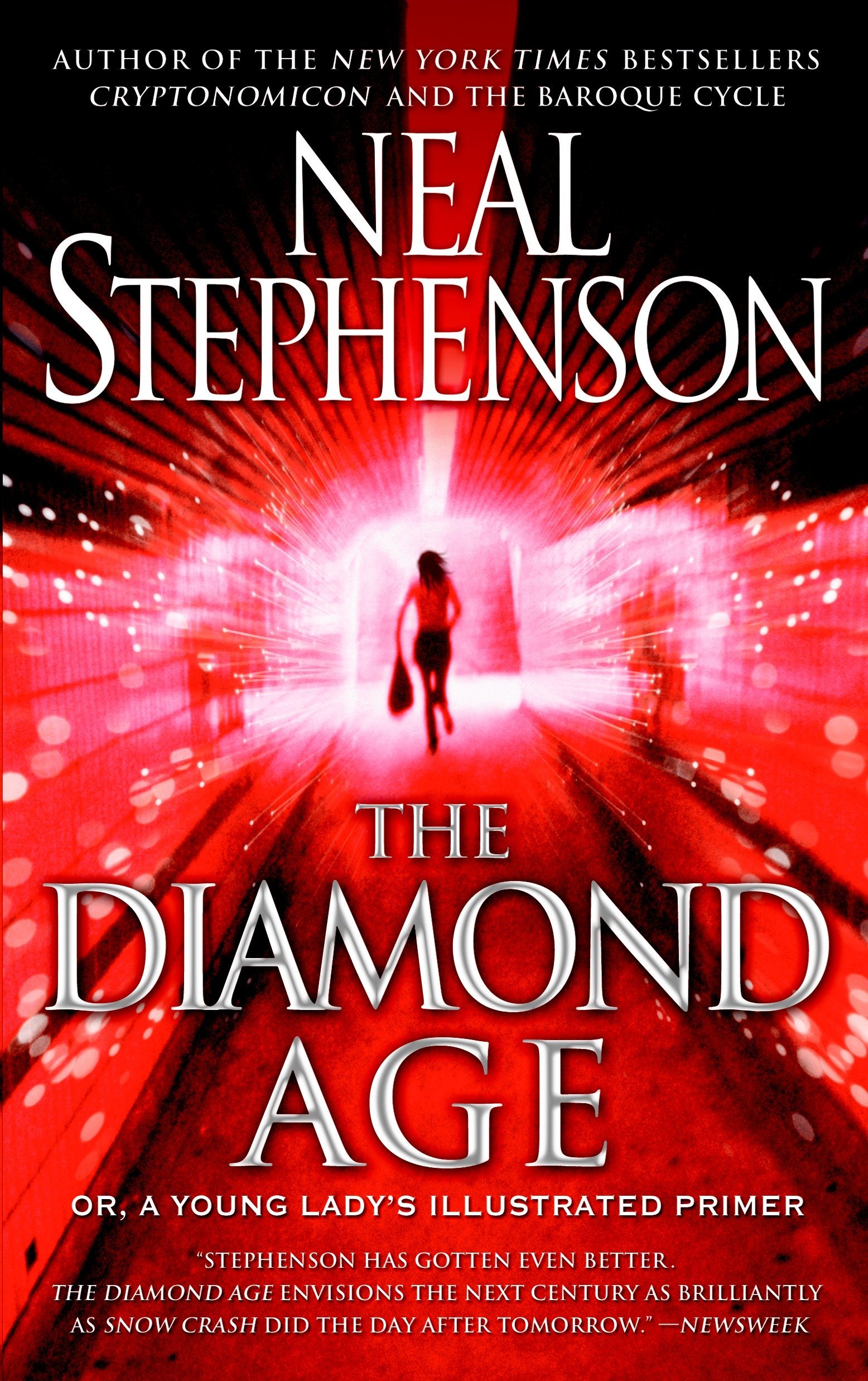
Fiction, 499 pages, published in 2000.
Recommended by a friend, Diamond Age is a sci-fi novel about a future world whose society with advanced nano-technology is fragmented into discrete warring cultures within cities. His world building is fascinating; he explores the implications of ubiquitous nano-technology, where every household has a “matter compiler” that creates household objects as needed from “the Feed” of molecules distributed from a central source. Stephenson’s world is sharply divided by global “phyles,” global cultures that are sovereign in certain districts of different cities across the world and impose their own sets of rules. Some of the main characters belong to a “Neo-Victorian” phyle that controls a section of Shanghai, alongside the nearby “Han” and “Nippon” phyles, and the book comments on losses in translation between cultures and the benefits and challenges of more centralized and decentralized ways of organizing societies. (He also follows a hierarchical faction of hackers that aim to restructure the world as is.)
The book follows several plotlines and a collection of loosely-connected characters. My favorite chapters were those that followed Nell (a young girl from a very poor background) as she interacts with the Young Lady’s Illustrated Primer, an interactive story-book that adapts to her real-world challenges to teach her independent thinking in a world where most people have become extremely passive. There are plenty of strange asides and tangents (and a few plotlines at the end of the book involve unnecessary sexual violence), and some of the characters are less interesting than the ideas they represent; nonetheless, I found it to be a great read.
Antifragile, Nassim Nicholas Taleb
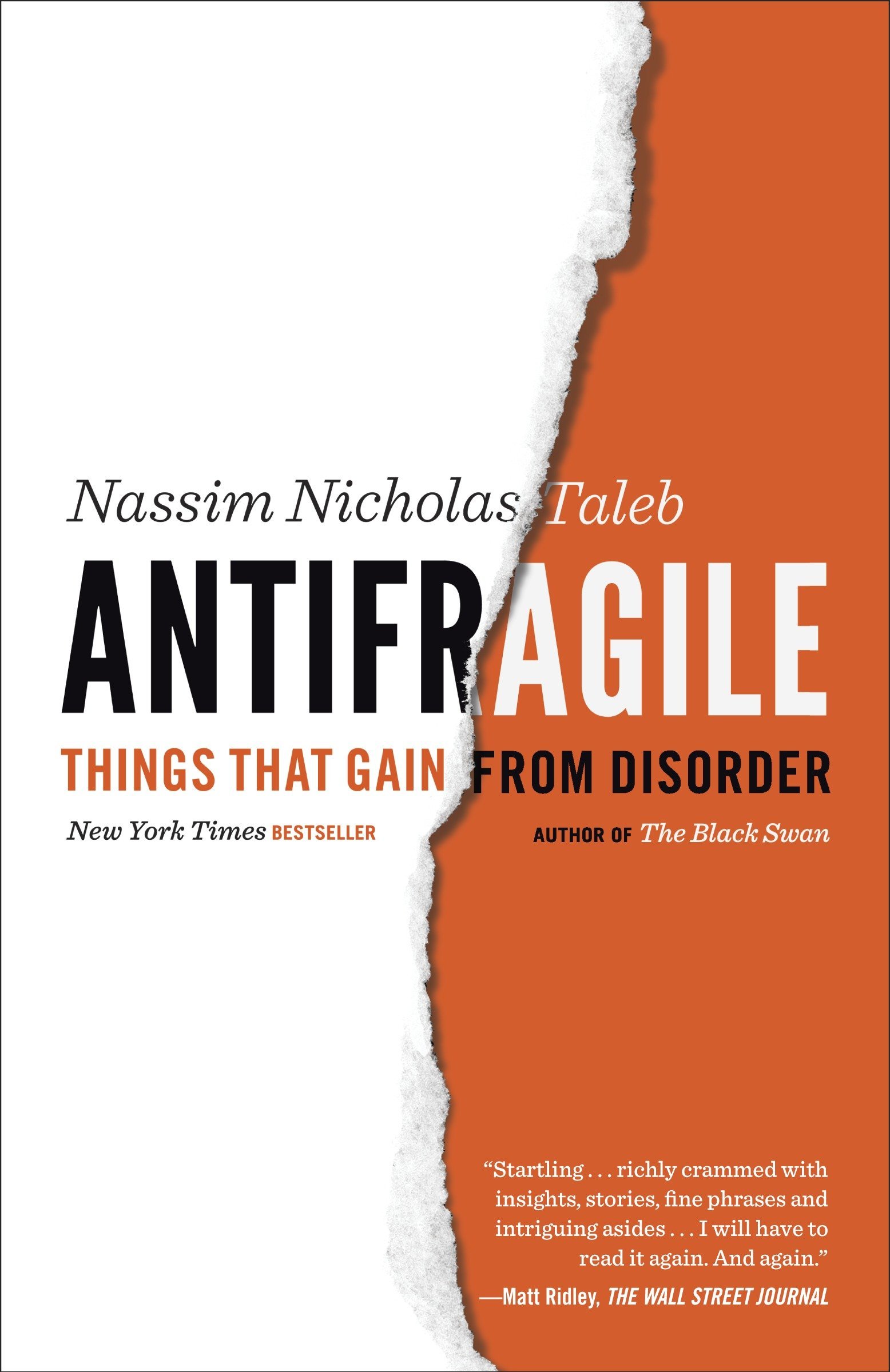
Non-fiction, 519 pages, published in 2012.
I read The Black Swan by Taleb in 2020, which focuses on the idea that we (academics, world leaders, everyday people) repeatedly fail to consider “black swan” events, low-probability and high-significance events (like a terrorist attack or a pandemic) are difficult to model, yet occur frequently enough to frequently catch us unprepared. He excoriates and ridicules so-called experts caught unaware by unexpected disasters because their models assume that risks roughly follow a normal distribution, where deviation from some mean value is uncommon; such models are good for considering natural phenomena (like heights of people and the number of people who die from heart disease every year), but perform terribly for phenomena where the interesting behavior exists far from the mean (such as the winner-take-all dynamics of wealth accumulation and the death tolls of wars).
Antifragile is his follow-up on The Black Swan, which focuses less on diagnosing the problem and more on constructing strategies that best handle these rare events. He argues that systems (e.g. investment strategies, research agendas, foreign policies, health regimens) should be designed to not only handle uncertainty but grow stronger in the face of rare events and volatility. They do so by designing responses that are nonlinear; for instance, he suggests an “barbell” investment strategy that invests most of a portfolio in extremely stable investments (think: bonds) and a small amount in ventures with low-probabilities of astronomical success. Doing so creates a “convex” response that bounds the amount of harm one suffers from failure while being open to extreme amounts of success. (Notably, Taleb has employed such strategies to great success, making lots of money by betting against the housing bubble that preceded the Great Recession and all the “suckers” who believed in it.)
Taleb regards antifragility as a broad life philosophy that extends well beyond just investment, frequently invoking classical scholars and focusing on a wide range of applications. He ruthlessly criticizes those whose value systems are fragile to uncertainty, especially those who lack skin in the game and who are not the ones directly harmed by the failures of their models. He reserves intense criticism for academics, most of whose research he deems at best ineffectual (since he believes innovation to come from tinkering and dealing with uncertainty directly) and at worst evil (from being held unaccountable when their models are deployed at a large scale and fail to work). He made points that on occasion made me feel directly under attack.
Personally, I think his pugilistic style worked much better in The Black Swan, where his aim is to criticize, than in Antifragile, where his goals are more constructive. I found his antifragility framework compelling in the areas where he has expertise (such as investment), but less so when he discusses topics like nutrition and politics, where his expertise is less apparent and he relies more heavily on ad hominem attacks on those who disagree with him. His frequent assumptions of bad faith and incompetence grated on me intensely; at the same time, I certainly grew as a thinker by reading both of his books, and I indend to read more of his works later on.
If you can stand Taleb’s writing style, I’d certainly recommend the book.
The Death and Life of Great American Cities, Jane Jacobs
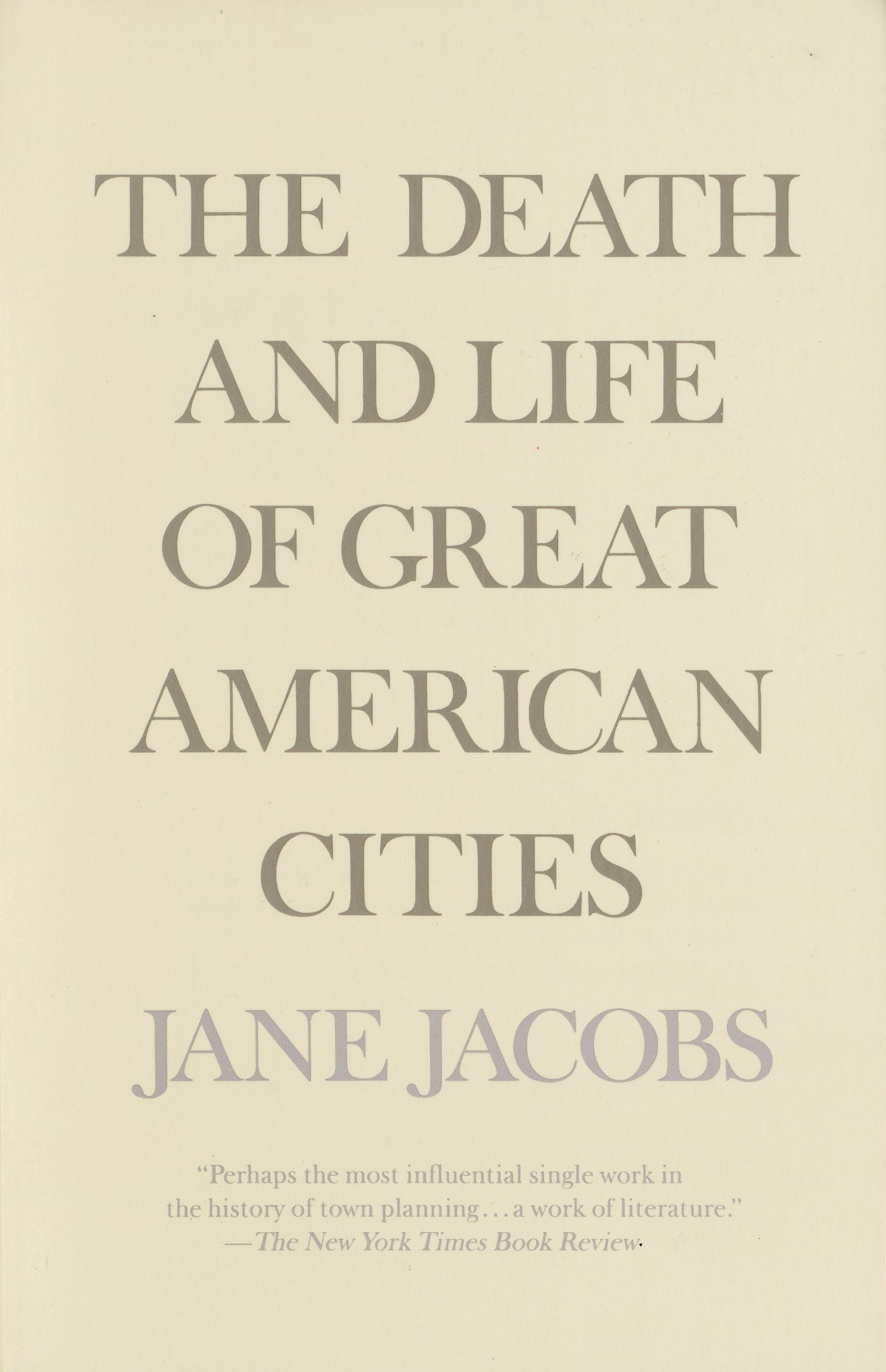
Non-fiction, 458 pages, published in 1961.
As a relatively new New Yorker who geeks out on trains, loves walking long distances around the city, and has opinions on housing and density in cities, Jane Jacobs was a must-read, and I really enjoyed her polemic on urban planning. Set in Robert Moses’s NYC, where neighborhoods were routinely razed without the consent of their inhabitants to build freeways, Jacobs argues that centralized urban planning fails to create lively and safe neighborhoods and argues for mixed-use development and public input. She argues that cities and neighborhoods are dynamic and a lack of respect for their social fabric (by, say, replacing a dense immigrant neighborhood with an active street life and a mix of apartments and shops with a sterile apartment building surrounded by lawn) harms residents and raises crime. She criticizes central planners like Moses for failing to understand the dynamics of the neighborhoods they interrupt, and suggests that mixed-use development–where houses, storefronts, schools, and restaurants coexist–keep neighborhoods safe by having varieties of people passing through at different times of the day for different purposes.
It was particularly fun to listen to this as an audiobook while walking around the city. She frequently singles out particular blocks, parks, and neighborhoods in New York for praise or criticism, and often they’re similar enough 60 years later for me to see her thoughts with my own eyes. Her arguments on mixed-use development are very prescient, and many modern developments in NYC and other cities obey the principles she lays out. At the same time, her arguments for local control and for the voices of neighbors to be accounted for arguably have been too successful; many of the key limitations faced by cities when planning are vocal neighborhood groups that weaponize hearings and public comment windows that prevent cities from building projects that improve public transportation and increase affordability.
I thought there was an interesting overlap between Jacobs and Taleb’s books. Jacobs’ arguments against projects that serve only a single function and splinter neighborhoods can be framed as a criticism of Moses-style urban planning as being too “fragile.” Her advocacy for multi-use projects claims that having housing and schools and stores and restaurants in the same neighborhoods prevents any blind-spots in safety that occur when only one function is present; this seems to mesh nicely with Taleb’s strategies for avoiding susceptibility to uncommon events.
The New Me*, Halle Butler
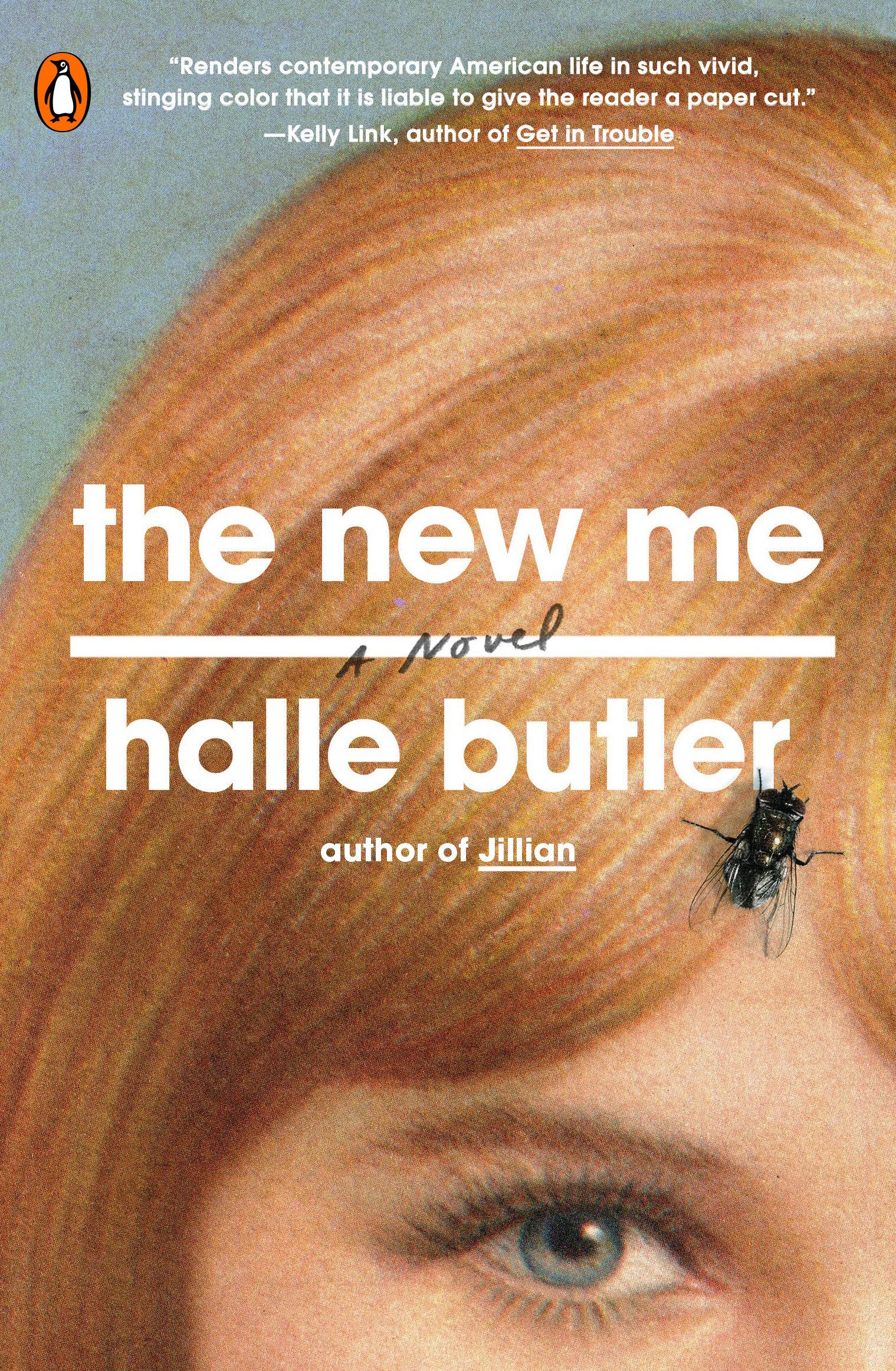
Fiction, 304 pages, published in 2020.
This was the first book club book I read this year, and it’s a bit of an odd one. It follows Millie, a depressed 30-something Millennial woman living in a city working at a temp job. She suffers from extreme burnout, has terrible hygiene, and hates her friends. The book documents the sense of unfulfilled expectations and directionlessness faced by privileged young adults who were told they were special. Some of the best scenes involved Millie extrapolating how her coworkers live based on a few observations. It also does a good job documenting the cyclic process of seeking out life changes that will make one happier, succeeding temporarily in making those improvements, and then losing hold of them and sinking back to a depression. If you can accept that Millie will be exhausting and aggravating at times, it’s a nice read.
I haven’t read My Year of Rest and Relaxation, but apparently this is very similar.
The Midnight Library*, Matt Haig
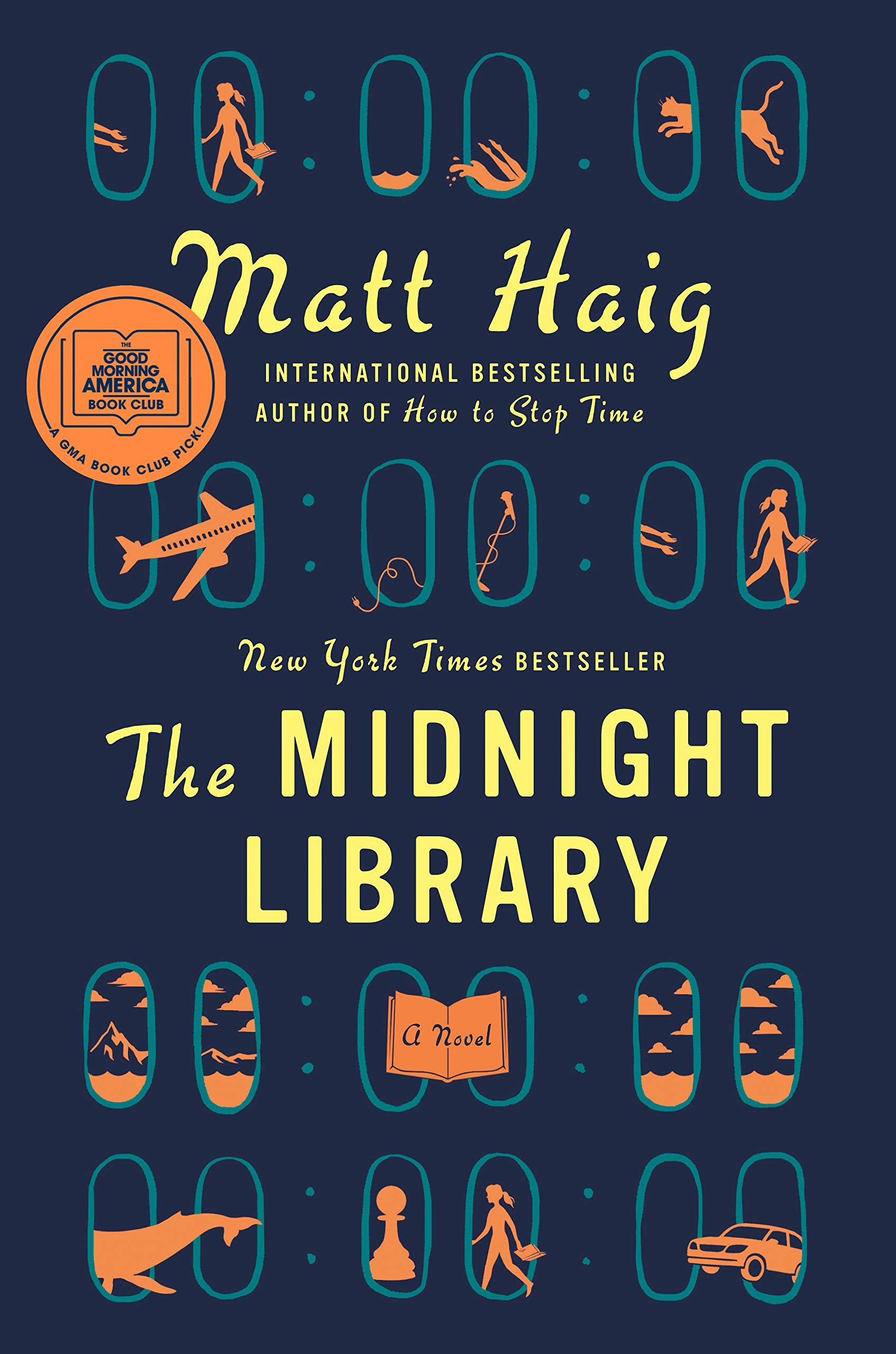
Fiction, 193 pages, published in 2019.
A young woman finds nothing in her life to be going her way–her cat has died; her family is estranged; she is fired; her love life is non-existent; and her dreams of being a rockstar, a glaciologist, or a swimmer are unmet–and she decides to take her own life. Instead of dying, however, she finds herself in a library where she has the opportunity to visit alternate versions of her life had she made different decisions at different points in her life. The result is a series of anecdotes of her experiencing different versions of herself and observing what changes and what stays the same. The book is a little predictable and can be saccharine at times, but it’s a very nice exploration of the main character, and it has a nice ending.
Personally, I was annoyed by the parts of the book that tried to talk about multiverse theory as an explanation for her ability to explore the different timelines; multiverses seems so overused at this point, and I think the author could have just presented with ability to transfer between lifetimes as fact without needing to get all pseudo-scientific. But that’s just a silly thing that bugs me; I overall really liked the book.
Pachinko\(^\dagger\), Min Jin Lee
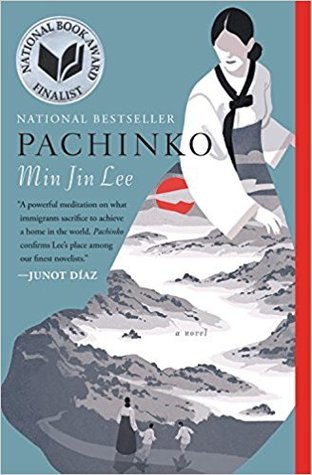
Fiction, 496 pages, published in 2017.
Pachinko follows four generations of a family of Koreans who immigrate to Japan during World War II over several decades. The book was historically informative to me; I’d had no idea of the scale of the atrocities Japan committed against Korean people and the extent to the racism ethically-Korean people living in Japan face. The book primarily follows the life of Sunja, who as a teenager has an affair with a wealthy older man and becomes pregnant, but refuses to go with him when she learns he is married. She instead marries a poor Christian missionary, who emigrates to Japan, and the novel follows her challenges to live in Japan and the divergent paths of her two sons. Lee’s characters are very compelling and she tells a great epic about coming of age and power dynamics in a land where one does not belong. The title refers to a casino game in Japan, whose parlors are often owned and operated by Koreans; pachinko goes on to represent both how Koreans living in Japan can rise in a foreign society, but also the cultural barriers that prevent any real form of equality.
I was completely immersed by this book, and I’d strongly recommend it.
A Burning, Megha Majumdar
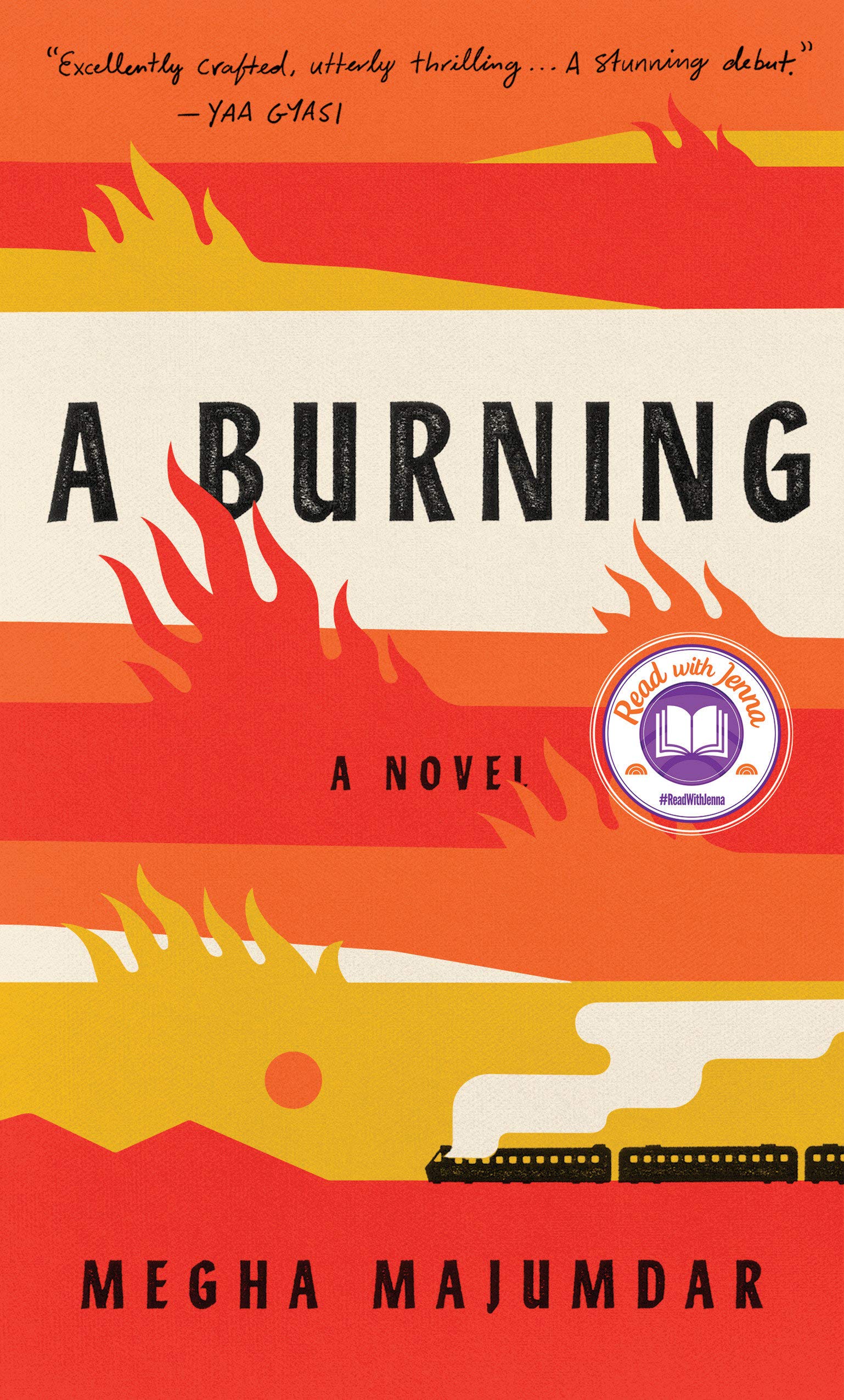
Fiction, 304 pages, published in 2020.
The novel is set in India amidst rising Hindu nationalism (as there is today under Modi) and follows three characters enmeshed in different ways in a terrorist attack that destroyed a train and killed numerous people. Jivan is a Muslim girl from a poor background struggling to get ahead who is baselessly framed as an accomplice of the attack. PT Sir is a P.E. teacher who once taught Jivan and sees a pathway to a more notable life for himself by working in a Hindu nationalist political party that aims to capitalize politically on Jivan’s case. Lovely is a singer who is a hijra and has proof of Jivan’s innocence. The book is an interesting exploration of their intersecting stories and what happens when getting ahead requires moral compromises. I found the book to be a good read; the politics of it were a bit blunt and in-your-face, but the characterizations were good.
New York 2140*, Kim Stanley Robinson
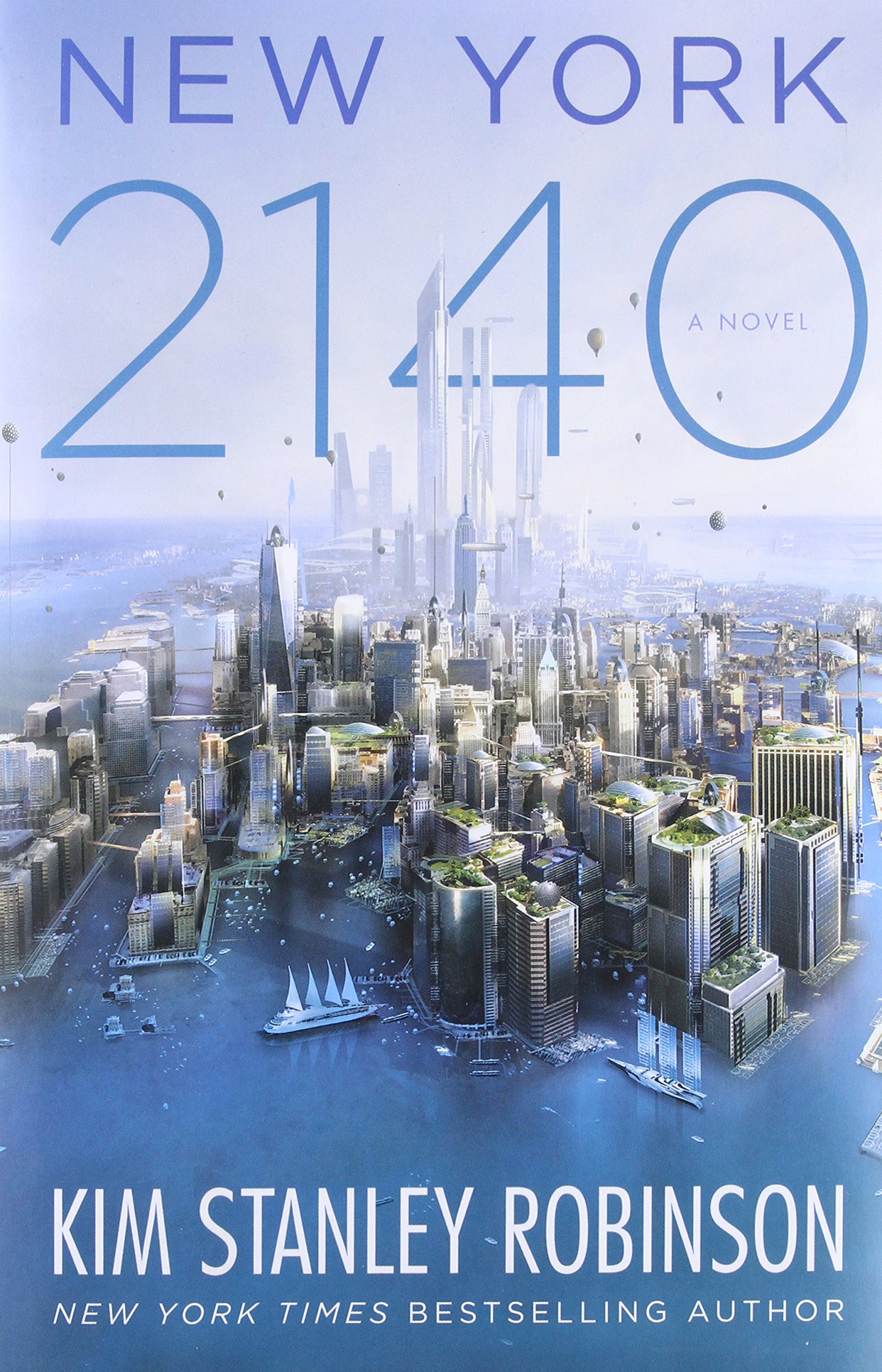
Fiction, 624 pages, published in 2017.
The title here is pretty literal; the book imagines New York City in 2140 after being ravaged by climate change and having sea levels rise fifty feet. After neglecting climate change for years, humans in Robinson’s book are shocked by the rapidness of sea level rise and are forced to rapidly adapt when it happens. The main characters live in the famous Metlife building in Midtown, which is partially submerged. People navigate primarily by boat and buildings frequently collapse due to structural damage, while the parts of the city that are above water (like my own neighborhood Morningside Heights) have become enclaves for extremely rich real estate developments. As with Diamond Age and many other sci-fi books, the concepts developed are often much more interesting than the characters, who often seem like mouthpieces for ideologies rather than three-dimensional people. However, the concepts explored are fascinating (amphibious people living mostly underwater, the consequence of climate refugees, reality stars trying to save polar bears from extinction), and Robinson seems to have done his homework on the science.
The book’s message is a broader critique of capitalism that goes beyond its failure to slow climate change. Robinson’s world is one where everything is financialized (a character makes his living betting on the level of sea level rise in different locations), where the division of wealth is even more extreme, where private security who protect assets carry more power than police, and there are very few jobs in the “real” economy but tons of lawyers and investors. He focuses heavily on the 2008 financial crisis (which loses a bit of immersion, since it seems unrealistic to have characters fixate on something 132 years ago), and the characters work to achieve their goals by working in a tenant’s union and ultimately organizing electorally. All in all, an interesting (albeit, dense and occasionally dry) book that’s more a critique of finance than of fossil fuels.
Being Mortal\(^\dagger\), Atul Gawande
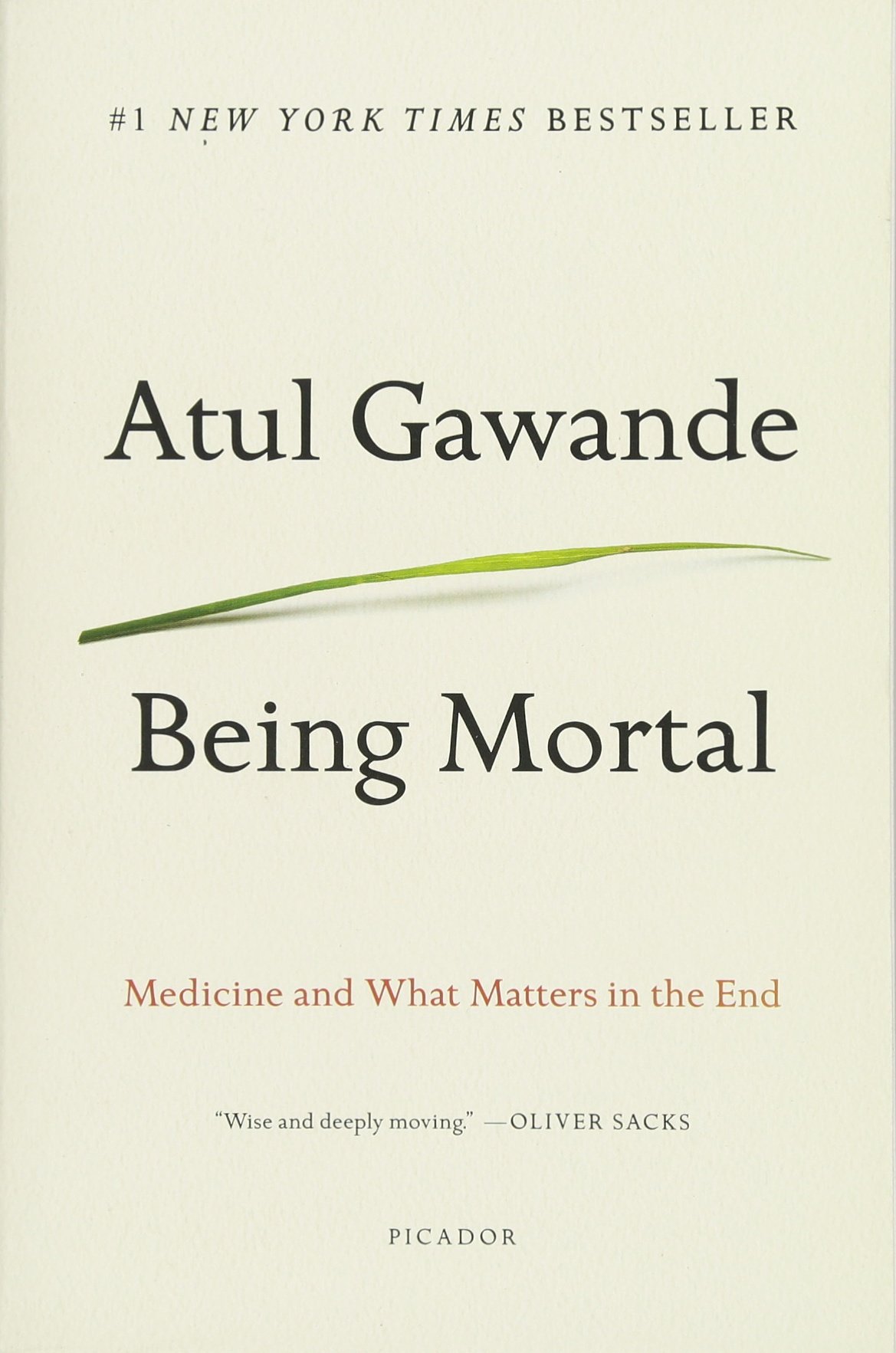
Non-fiction, 282 pages, published in 2014.
Twice, I’d told a friend in medical school that I’d read When Breath Becomes Air, and twice, they’d told me that Being Mortal provides a better meditation of medicine and mortality. I finally decided to read it, and I found it fascinating. Gawande focuses on the challenges posed by aging and criticizes how many of our life decisions focus on extending life at the cost of independence, comfort, and individuality. He is particularly critical of how many decisions about aging and death have shifted from being nuanced cultural discussions to purely medical choices focused on a patient’s survival over their own desires; fortunately, he believes the tide to be turning and finds promise in recent changes to elder care and hospice care. He makes his case by presenting a wide range of anecdotes about aging and dying people alongside well-researched arguments. While most of the book is not a memoir, the book closes with a very compelling discussion on his own father’s process of dying and the delicate decisions that were made by his father, his family, and his doctors.
Quotes from books rarely stick with me, but one did from this one that encapsulates the challenges we often face with aging and death: “We want autonomy for ourselves, but safety for those we love.” I appreciated the book because it grapples with the complexity of the questions posed by aging and dying without claiming to have easy answers to them.
The Man Who Mistook His Wife for a Hat*, Oliver Sacks
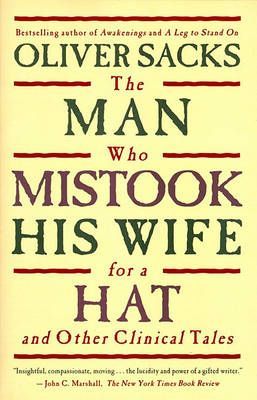
Non-fiction, 243 pages, published in 1985.
The book consists of a series of essays about patients the author has treated as a neurologist. In one essay, a patient can no longer create new memories, and he remembers none of the previous several decades; his memory of his life during World War II remains sharp, and he does not realize that he and his family have aged. In another, a musical teacher has visual agnosia and fails to recognize objects, despite having working vision (and hence mistakes his wife for a hat); the essay is about finding a way to focus on the music that brings him joy despite the loss of visual capabilities. Most of the stories are more about the humanity of those who have these rare conditions, rather than a rigorous medical discussion.
The book club meeting focused a lot on the dissonance we felt while reading the book; for the time period when Sacks published the book, the essays are a far cry from many other works that would ridicule or dehumanize these people. However, Sacks’s language doesn’t hold up for the modern world, and certain words and descriptions come across as overly harsh. While his book as written seems crass at times to our group, we recognized that it’s still a strong step forward for its time.
I was particularly affected by one of the later essays, called “The Twins,” which focuses on two autistic twins with extremely sophisticated mathematical intuitions. The two could memorize huge enormous numbers and factor those numbers in their head. They often communicated by sharing prime numbers to one another, which conveyed actual messages and emotions. They appeared to have a deep intuitive understanding of prime numbers that almost everyone else lacks. As a mathematician (sorta) myself, it made me reflect upon how rudimental my mathematical intuition is, and how poorly trained my brain is to do the job I have. I can keep maybe 4 or 5 variables in my head at once and visualize no more than three dimensions; these twins he profiles clearly had a richer intuition that could not be explained, and I found myself thinking of how limited my own perception of math is by the way my brain is configured.
Guns, Germs, and Steel, Jared Diamond
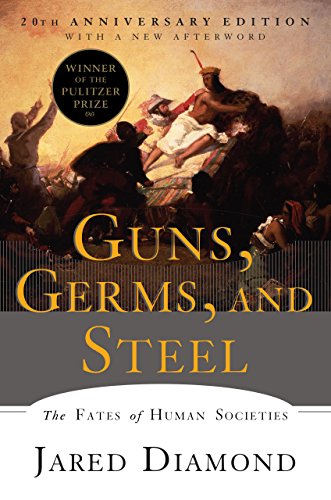
Non-fiction, 498 pages, published in 1997.
Okay, so this is a “big history” book (like Sapiens) where an expert in one field comes up with a big unifying theory that claims to explain the main trends in history from homo habilis to 2022. Despite the pitfalls of genre–the oversimplification of complex events to fit a narrative that can be presented in 500 pages–I think the book’s core argument is a good one. Diamond argues that geography is to the nature and extent of civilizational growth in different regions and helps explain why certain civilizations dominated others historically. I found the most interesting parts of the book to be his discussions on agriculture: that annual grasses are the easiest to domesticate, that there are relatively few animals that can be domesticated at all, and that the selection of domesticable plants in the Americas and in Australia were too nutrient-poor to make it possible to abandon the hunter-gatherer way of life. Given Diamond’s background in evolutionary biology, geography, and physiology, I’m most persuaded by his arguments about the role nearby plant and animal species played in the development of early agricultural cultures and their ability to form empires.
Parts of the book seemed rather obvious to me, but perhaps that speaks to its success. My high school history teachers often assigned this book to classes, so its ideas about geographic influence on history were likely already indirectly incorporated by my teachers into lessons.
Drive Your Plow over the Bones of the Dead\(^\dagger\), Olga Tokarczuk (reread)
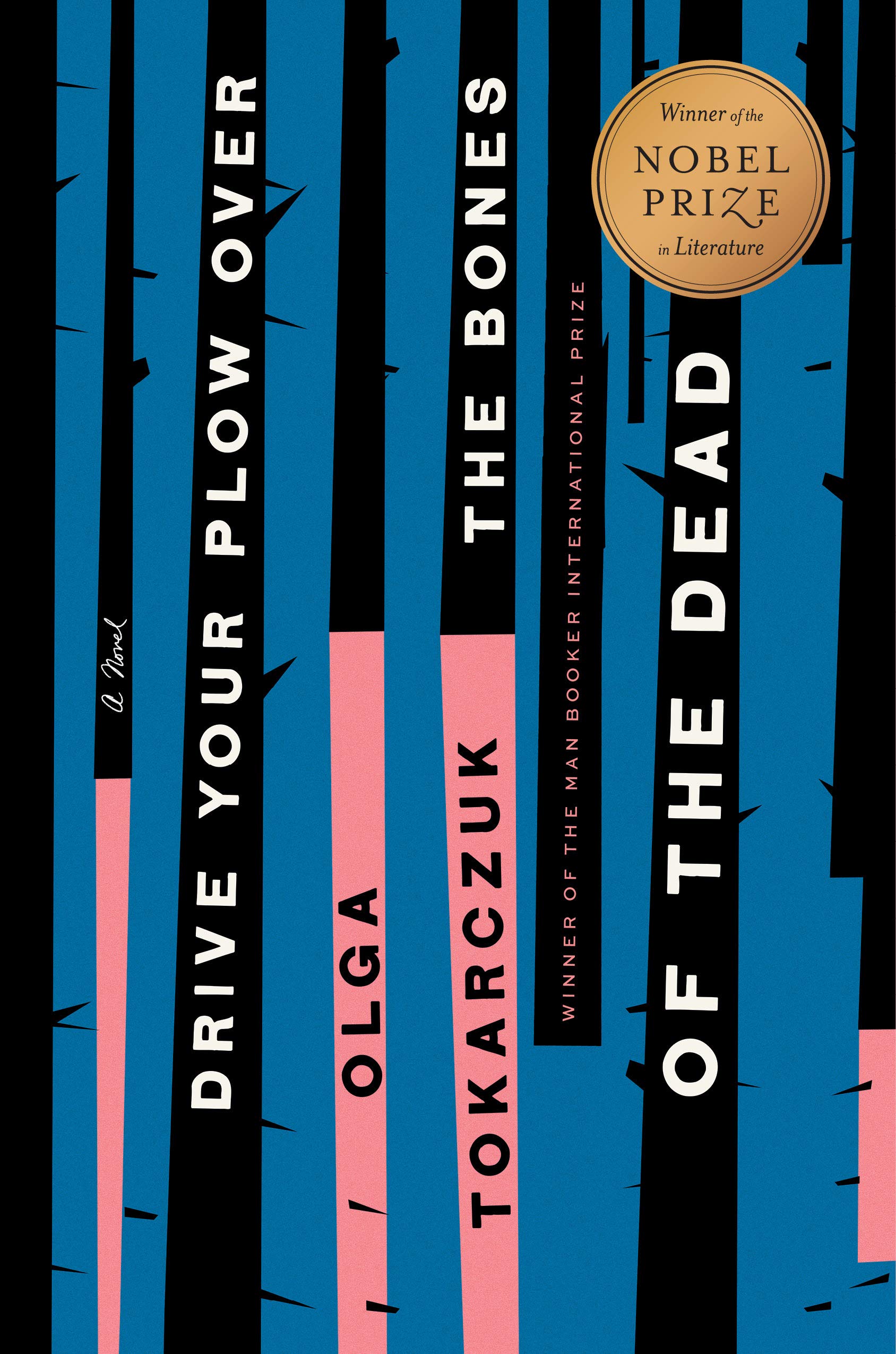
Fiction, 318 pages, published in 2009.
This was the first book I read for my book club in 2019, and I revisited it while traveling in Colorado for a conference this summer. Drive Your Plow follows Janina, an older Polish woman who maintains houses in a small village, cares for wild animals, translates William Blake, studies astrology, teaches English to children, cooks vegetarian food, and builds up an entourage of misfit adults. She’s a bit of an unreliable narrator who periodically omits key details, but she’s easy to love nonetheless.
The book reflects on militant vegetarianism and the invisibility of older women. It does a great job at highlighting the anguish one must feel when all others are seemingly blind to what is transparently injust. The novel defies genre and lurches between cozy moments and grisly murders (a character is eaten alive by beatles). I spent my first read trying to figure out whether the book was magical realism or not, and the ambiguity made it a more gripping read. The translation from Polish is also incredible; there’s a particular scene where Janina is attempting to figure out the right Polish phrase for an English passage, which means the translator must have come up with multiple plausible English translations of Polish translations of an English text.
I liked it well enough my first time through, but I thoroughly enjoyed it the second. Knowing the general contours of the plot made it possible for me to catch more of her biting and witty observations of those around her and to better understand the nature and intensity of Janina’s rage.
A Brief History of Seven Killings*, Marlon James
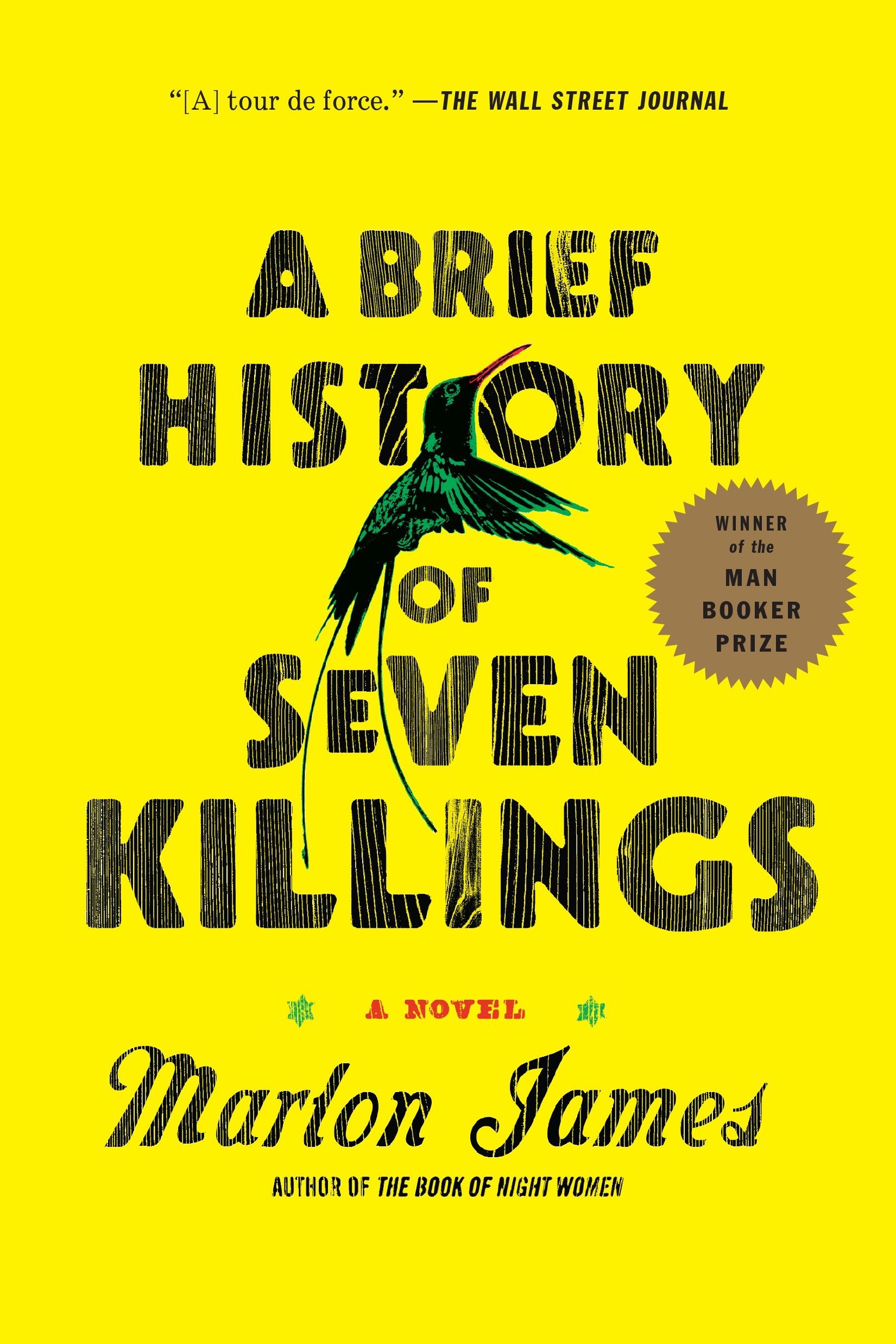
Fiction, 688 pages, published in 2014.
Before performing a peace concert in Jamaica in 1976, Bob Marley was shot by Jamaican gangsters in his house. He survived the gunshots and performed the concert two days later. The novel is divided into five sections, each of which covering the events of a single day between 1976 and 1991 in Jamaica and NYC from the perspectives of the gangsters involved, a lover of Marley’s, a CIA agent, and an American reporter.
The book is seriously gruesome. People are beheaded, shot in broad daylight, and die in overdoses. A man is buried alive, and the chapter is narrated from the perspective of the man buried. Some of the plotlines meander away from the core plot: one of the gangsters has anonymous sex with men while denying his homosexuality; a Jamaican-born caregiver exchanges raunchy jokes with the old white man she works for. It’s at times hard to keep track of all of the characters, but it’s a pretty neat tapestry of the far-reaching effects of a single day once you can follow it. It’s a commitment to read, but the book has fascinating characters and touches on a wide range of themes if you can stomach it.
As someone who didn’t know much of anything about Jamaica prior to reading the book, I found it highly educational, especially with respect to Jamaican slang; you’ll encounter words like “bomboclat” frequently, and I think it’s easier to listen to the audiobook, where most chapters are narrated by people with Jamaican accents. Also, this book introduced me to Griselda Blanco, who has one of the crazier Wikipedia pages I’ve read.
Red, White, and Royal Blue, Casey McQuiston
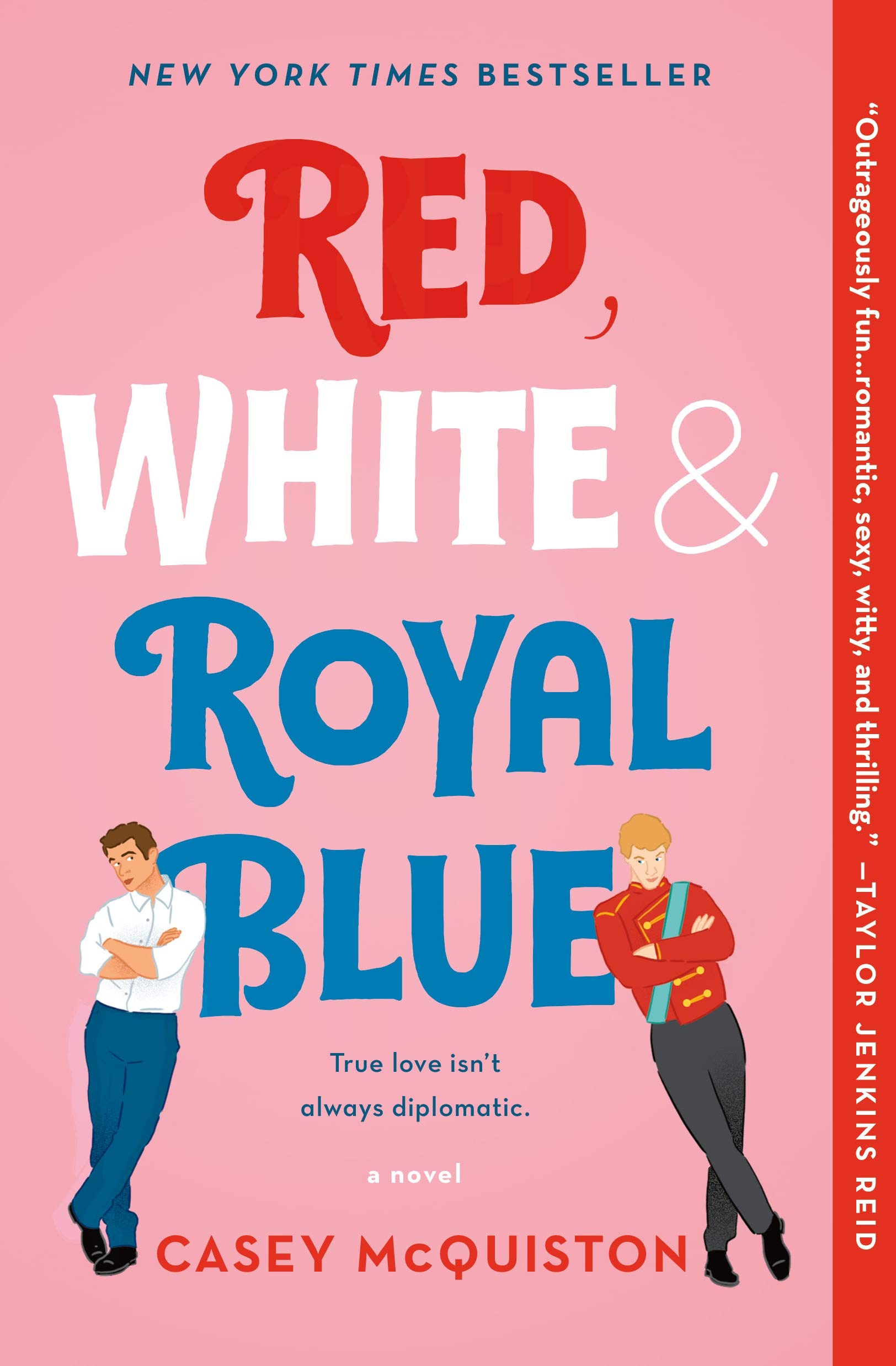
Fiction, 421 pages, published in 2019.
After reading 700 pages of Jamaican gangsters murdering people in cold blood, I needed something light and cute to devour and bring my mood back. Enter Red, White, and Royal Blue, a cute gay romance book about the biracial bisexual son of the first female American president falling in love with a prince of England. Sure, it was a peak Trump-era liberal what-if fantasy escapism, and sure, it was cheesy and overly cutesy at times, and yeah, some of the politics seemed a little over-simplified at times, but who cares? It served its purpose, the characters were fun, and it was a nice escape from the brutality of Seven Killings and from the stress of the real world.
The Smallest Light in the Universe\(^\dagger\), Sarah Seager
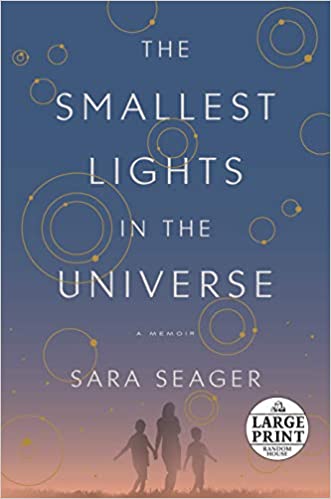
Non-fiction, 308 pages, published in 2020.
One of my high school teachers recommended this memoir about an MIT physicist’s search for exoplanets and grief from the death of her husband to cancer. Both components of the book and their intersections are excellently written. As someone who knows extremely little about physics, but who’s always been vaguely interested in space, I enjoyed Seager’s descriptions of the science used to evaluate whether an exoplanet could feasibly support life and of the intensity of her drive to pursue that work.
Her discussion of her husband’s death and the grief of Seager and her two young sons was remarkable in its vulnerability and openness. I found myself gratefully admiring Seager for her resilience, but also for her ability to be honest about times when she was less resilient. She captures moments that many of us might be too uncomfortable to bear to our peers let alone the whole world: her coping mechanisms, her over-reliance on others to help her complete simple tasks, the internal turmoil of falling in love again, the stresses of traveling as a single parent. I appreciate that she shared her journey and has the humility, which many other academics lack, to show her shortcomings.
Exhalation*\(^\dagger\), Ted Chiang
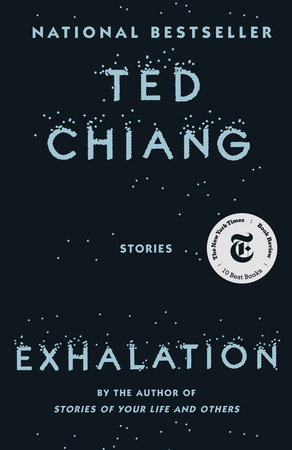
Fiction, 352 pages, published in 2019.
I’d been itching to read something by Ted Chiang for a while, and I finally got the chance with a book club book. Exhalation is a collection of sci-fi short stories that hits on a variety of themes on technology.
In “The Lifecycle of Software Objects,” a woman who is employed by a software company to train and socialize “digients,” AI animals with high capabilities for intelligence. While reading it, I kept thinking it was going to fall for the standard tropes of books on AI: When will the digients go rogue and kill their handlers? Are they going to suddenly be declared “conscious” by some fuzzy definition? Instead, the story focuses on the relationships among handlers and between handlers and digients and their adaptation to less global issues: What happens when everyone else wants to migrate to a new digital platform which is incompatible for the digients? Is it acceptable to make copies of digients and use the copies for less savory purposes (i.e. sex work)?
In other stories, he considers machines that provide windows between parallel universes, juxtaposes the development of retinal recordings with the introduction of the written word to an illiterate tribe, explores time travel in a medieval Islamic context (where those who pass through the gates are more accepting of fate and avoid meddling), and makes the case we ignore amazing forms of life at home (like parrots) while aspiring to find extraterrestrial life. Unlike the two other works of sci-fi on this list, Chiang succeeds in marrying thought-provoking concepts with interesting characters. I’m looking forward to reading his other anthology, Stories of Your Life and Others.
Fun Home*\(^\dagger\), Alison Bechdel
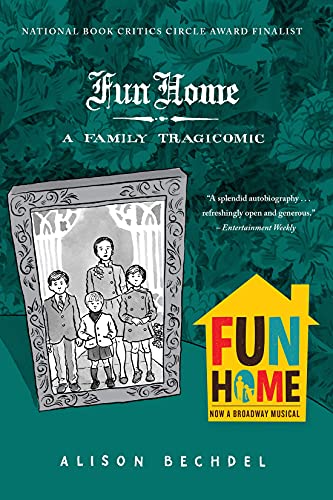
Non-fiction, 240 pages, published in 2006.
In this graphic novel, Alison Bechdel (as in the Bechdel test) examines her childhood and the nuances of her relationship with her troubled father. Both Bechdel and her father are gay, but Bechdel’s father remained closeted and had sexual relationships with teenage boys before taking his life not long after she came out to her parents. She highlights the nuances of their relationships and the generational differences between gay people who came of age in the 50s and the 70s; she wonders whether her father’s fate would have been different if he had been born later and expresses sympathy, without qualifying her criticism of his illicit actions.
I appreciated her thoughtful exploration of her fragmented family and found myself thinking more about the questions she asked about generations. I’d unconsciously mentally grouped grouped LGBTQ people into only two groups: those who were of age during the AIDS epidemic and those who were not; this book made me think more about the intense repression faced by those in my grandparents’ generation.
The Vegetarian*, Han Kang
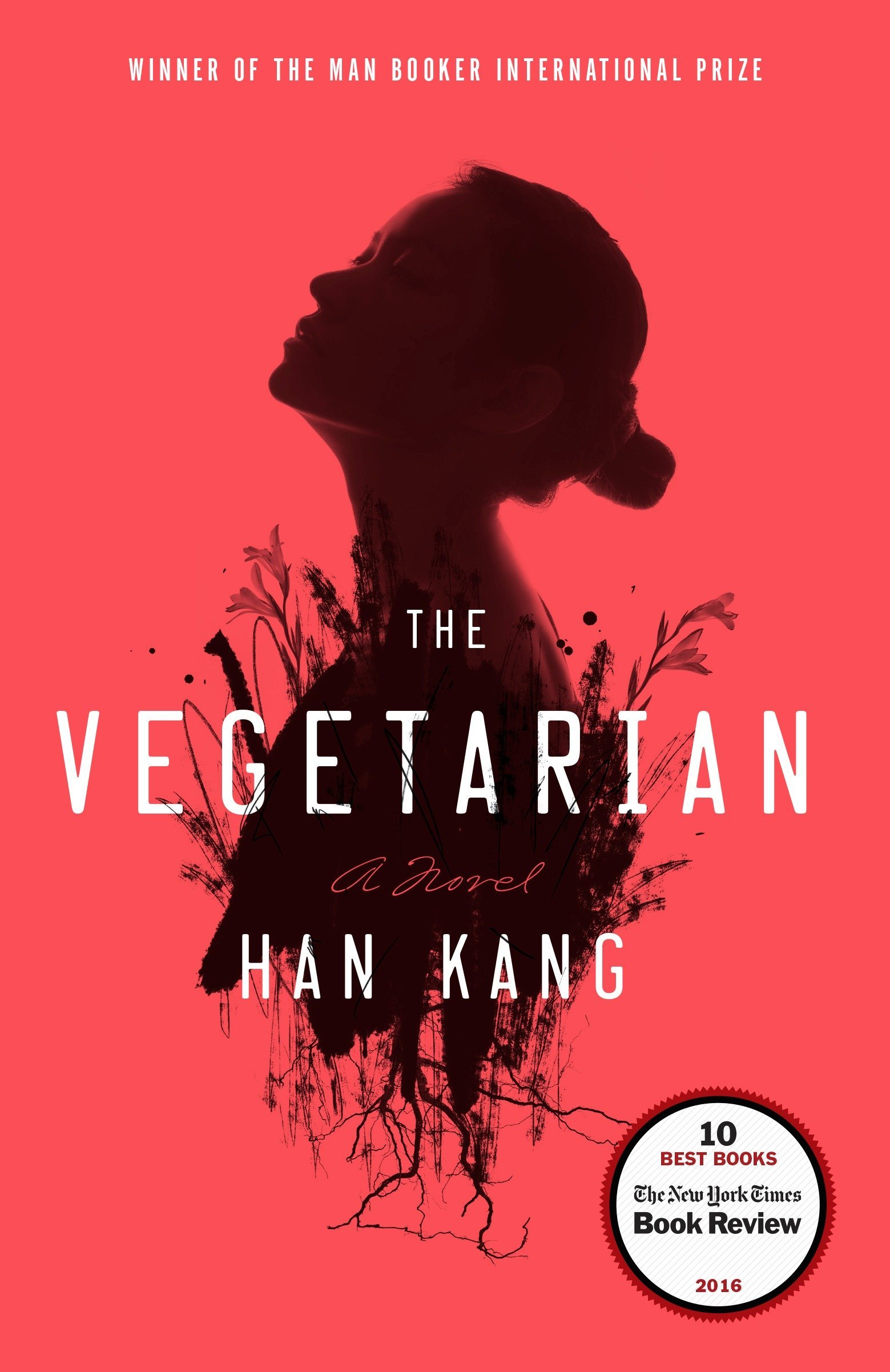
Fiction, 188 pages, published in 2016.
This might just be the most bizarre novel I’ve ever read. It starts with a decision by a Korean woman, Yeong-hye, to give up meat and become a vegetarian. Her husband and father respond to her rebellion in a shockingly harsh manner, given how widespread vegetarianism is. The first section of the book is narrated by her husband, the second by her brother-in-law, and the third by her sister. It’s about passivity, it’s about abuse, it’s about a lack of respect for female autonomy. It’s also about becoming a plant and sex scenes where both participants are covered in painted flowers. I won’t pretend to claim I fully understood this one, but it’s an interesting exploration of Yoeng-hye’s strange ways of taking control of herself. It’s really not about vegetarianism at all.
The Plague, Albert Camus
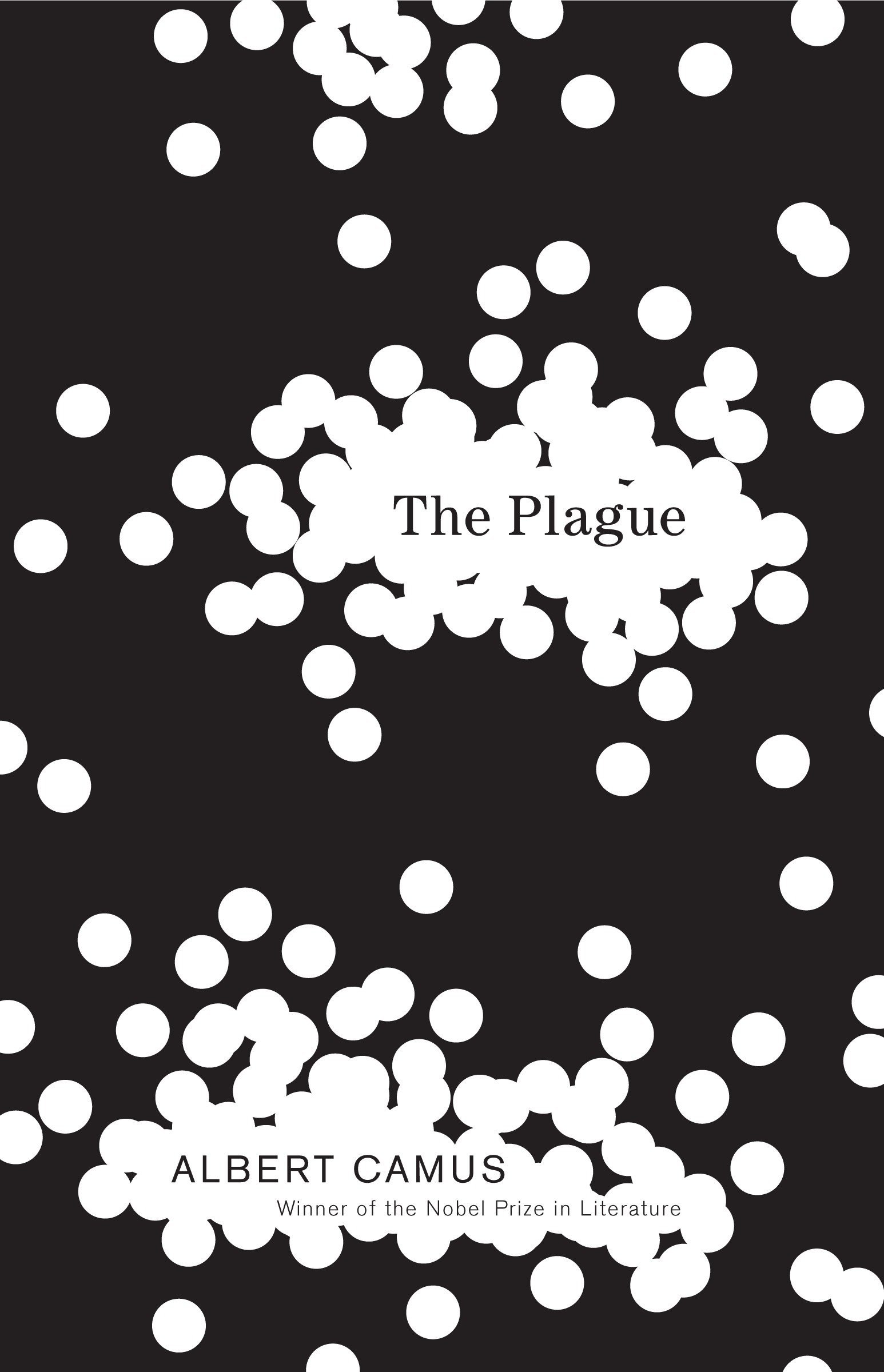
Fiction, 308 pages, published in 1947.
I waited long enough into the pandemic before reading The Plague, with the hope that I could pick up on its prescience for COVID without it hitting too close to home. It tells the story of a town in North Africa that is infested with a rat plague and follows Rieux, a doctor who treats infected patients whose commitment to treating patients is strong enough that adopting a fatalist attitude is unimaginable to him. Much of the book is about individual powerlessness in the face of an epidemic that acts according to its own whims; while Rieux’s choices to treat others are obvious to him, others struggle more to find meaning amidst the suffering and the arbitrariness of the plague’s killing. Camus is critical of handling forces outside our control (like a plague) by embracing absurdity; rather, one should fight it even against odds of failure.
Naturally, much of it felt very familiar from the perspective of COVID. The journalist’s desperation for an excuse to leave the city rings true for those of us who had voices in our head trying to rationalize why the lockdown ought not apply to us.
The Remains of the Day\(^\dagger\), Kazuo Ishiguro
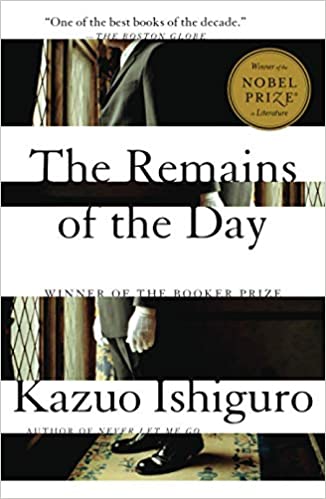
Fiction, 258 pages, published in 2005.
This may have been my favorite book of the year. Ishiguro chronicles the reflections of an aging English butler in the 1950s as the social order he spent his life serving decays and his recently-deceased lord’s name is besmirched. The events of the book take place over a drive in the countryside taken by the butler as he ponders his past and the morality of his beloved Lord Darlington. Throughout, he grapples with the question of dignity: Does dignity as a butler require serving a virtuous master? And if so, is it a core duty of a great butler to frequently assess the morals of the lord he serves? His ruminations on what it means to be a great memory and to have dignity causes him to revisit past memories about his father’s own career as a butler, on Lord Darlington’s association with German leaders before WWII, and his relationship with the housekeeper. His reflections are clear, thoughtful, and at times humorous, and I often found myself jarred by the gap between their clarity and his awkwardness in actual conversation.
I thoroughly enjoyed the book. It was a pleasure to read, and it fueled questions for my own reflection as I think about what dignity means in the context of my own career.
Conversations with Friends, Sally Rooney
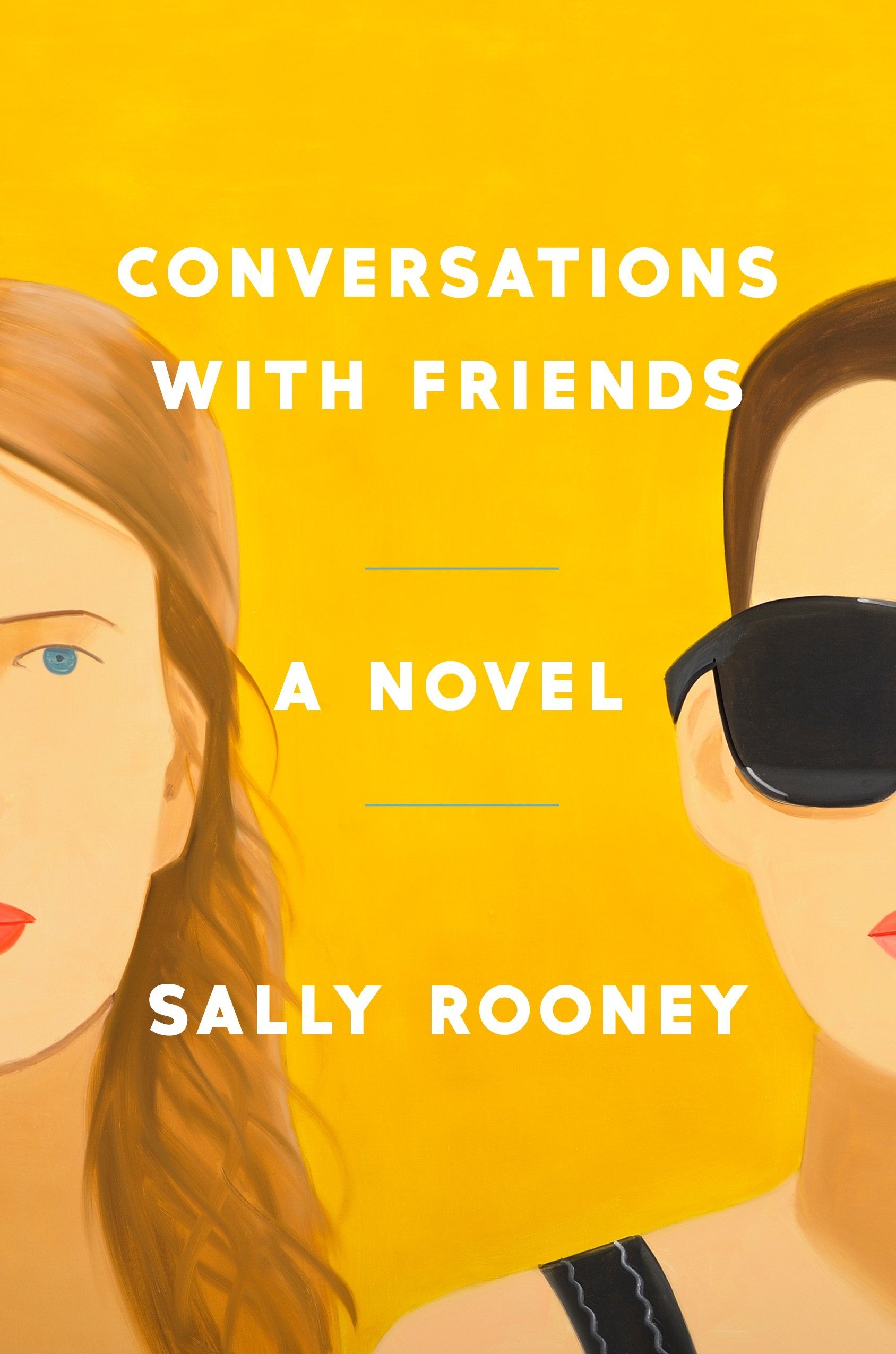
Fiction, 304 pages, published in 2017.
Rooney’s novel follows four main characters: Frances, an introspective and sharp writer and college student; Bobbi, her more bombastic and radical friend and former lover; Melissa, a socialite and older journalist who is intrigued by the girls; and Nick, Melissa’s passive husband and an actor. Frances and Nick’s love affair is the main focus of the plot, but it’s also the only book I’ve read where there’s actually a “love square” with four edges. The characters were interesting (although irritating at times), and it functioned as a coming-of-age book of sorts for Frances and Bobbi, as they come to better explore the power dynamics of their complex relationships with one another with the older couple. The malaise and insecurity it detailed was similar in some ways to that of The New Me, without the extreme dysfunction.
Overall, I’d say it wasn’t a perfect fit for me, but I’m still glad to have read it.
…
Thanks for making it all the way down! This took a while for me to write. (For 2022, I think I’ll try to write these little summaries as I go, so I’ll remember them better, and so I won’t have to do them all in one day.) Once again, happy new year, and I look forward to having more content soon (ML or otherwise).
Comments